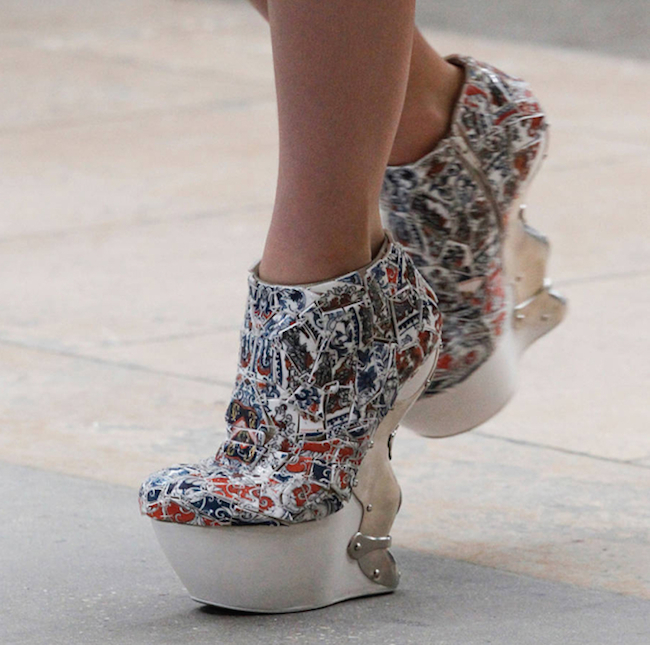BEIJING — Similar in spirit to a house adorned entirely with ancient vases, Chinese artist Li Xiaofeng takes shards of porcelain and sews them into ceramic dresses and suits.
For a while the artist worked entirely in historic shards, but in case you were worrying about the originals his materials were already broken, perhaps generations ago. In China House, the owner used historic ceramic works and in so doing destroyed them. Xiaofeng, on the other hand, gives the ceramics a second wind. By repurposing them he tries to lift them back to their former glory. It feels like an act of preservation, something born out of a sense of respect.
Art can sometimes run afoul of the law, though, and Xiaofeng’s preferred materials mean that his clothes can never be taken from the country. Visual News states that in 2010 the Lacoste company asked the artist for a porcelain polo shirt. Chinese law forbids any export of artifacts, however, which meant that Xiaofeng had to make the shards himself, using his own ceramic bowls, plates and cups. This is an interesting twist. What, if anything, is lost by eschewing artifacts for objects the artist made himself? We can’t tell the difference between one type of dress and the other, but one version is more romantic. What do ancient artifacts bring to the work that modern shards do not?
Li Xiaofeng (b. 1965, Hubei City) is represented by China’s Red Gate Gallery. Xiaofeng graduated in 2002 from the Mural Department of Central Academy of Fine Arts. He’s exhibited solo at The Opposite House, Beijing and in group shows such at the Red Gate Gallery, the Museum of Contemporary Art, the Yi Hotel (all in Beijing), the Musee Des Arts et Metiers, Paris and the Virginia Miller Gallery, Miami.
Do you love or loathe these works of contemporary ceramics fashion? Let us know in the comments.





Add your valued opinion to this post.